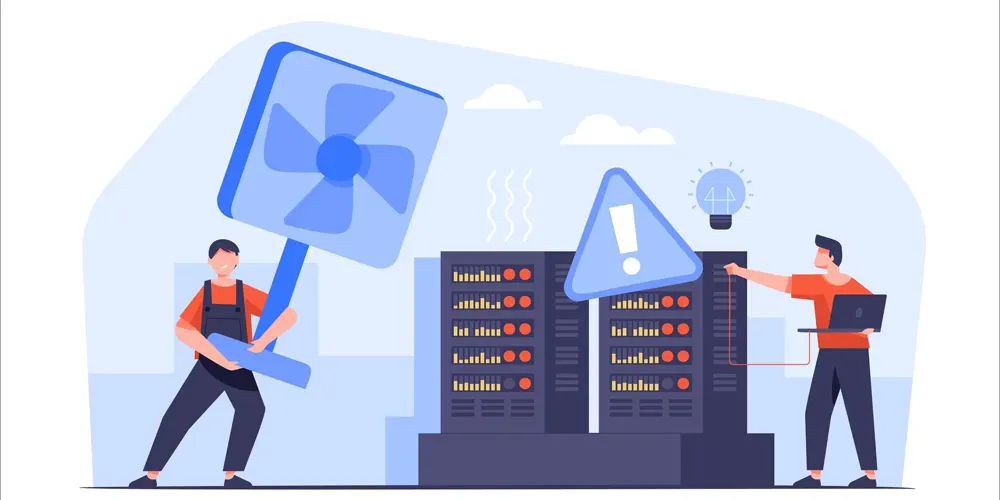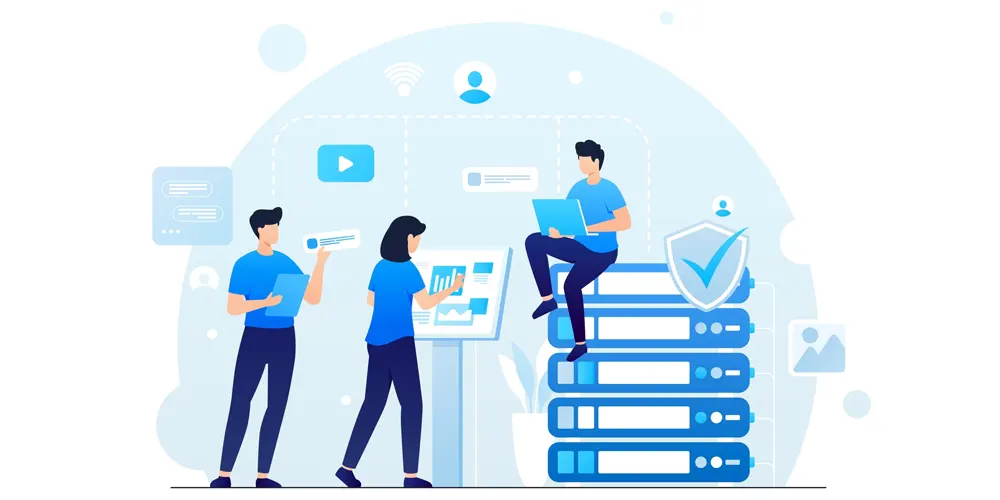10 Tips For Effective Implementation of LCR
By now we’ve covered all the essential topics when it comes to getting started with and implementing Least Cost Routing for wholesale VoIP traffic.
In case you missed any of those topics, do make sure to check those blogs out. Now for those who have already implemented LCR or are looking to improve it, here is your opportunity.
Having access to many top VoIP Industry veterans, I get to learn a lot from them. This has helped me compile their year’s worth of knowledge and experiences into blogs and guides for all of you.
What I have for you today are 10 powerful tips. 10 tips that will help you effectively implement Least Cost Routing.
So if you’re looking to maximize profits and minimize costs, let’s dive into our list!
1. Conduct Comprehensive Route Analysis

Comprehensive Route Analysis (CRA) in Voice over Internet Protocol (VoIP) refers to the thorough examination and evaluation of various factors involved in call routing. It encompasses analyzing call traffic patterns, cost considerations, call quality metrics, redundancy options, and failover capabilities of different carriers and routes.
CRA is essential for the effective implementation of Least Cost Routing (LCR) in VoIP. By conducting a comprehensive analysis, businesses can determine the optimal routes that offer a balance between low cost and acceptable call quality.
Through CRA, businesses can identify the most frequently dialed destinations, peak traffic periods, and call durations. This data helps in optimizing call routing decisions and ensuring efficient resource utilization.
By evaluating call costs associated with each carrier and route, businesses can make informed decisions to minimize expenses.
Moreover, CRA allows for the assessment of call quality metrics such as latency, jitter, packet loss, and Mean Opinion Score (MOS). This helps in selecting routes that deliver higher customer satisfaction and maintaining service standards.
Additionally, CRA enables businesses to evaluate the redundancy and failover capabilities of carriers and routes. This ensures uninterrupted service by having backup routes in case of network failures or outages.
2. Evaluate the Quality of Service Parameters

Evaluating Quality of Service (QoS) parameters is of utmost importance in the context of Least Cost Routing (LCR). It ensures that the selected routes not only minimize costs but also maintain a high standard of call quality.
Here's an explanation of the importance of evaluating QoS parameters for LCR and how to conduct the evaluation:
Customer Satisfaction: High call quality is essential for ensuring customer satisfaction. By evaluating QoS parameters, you can select routes that deliver optimal voice clarity, minimal latency, low jitter, and negligible packet loss.
Service Reliability: Robust call quality contributes to the reliability of the service. By considering QoS parameters, you can choose routes that offer consistent and stable performance, minimizing disruptions, dropped calls, or audio quality issues.
Business Reputation: Delivering superior call quality builds a positive reputation for your business. Customers perceive organizations that provide clear and reliable voice communication as trustworthy and professional.
Operational Efficiency: By evaluating QoS parameters, you can identify routes that offer optimal call quality with efficient resource utilization. This ensures that network resources are used effectively, minimizing wastage and improving operational efficiency.
Conducting QoS Evaluation for LCR
- Define relevant QoS metrics like latency, jitter, packet loss, and MOS.
- Perform network tests to measure and analyze QoS metrics for different carriers and routes.
- Consult with carriers to understand their QoS offerings and network infrastructure.
- Analyze historical call data for identifying areas requiring improvement in call quality.
- Consider redundancy and failover options to ensure seamless call continuity during network issues.
- Balance cost and quality by comparing QoS parameters with associated costs when selecting routes.
- Implement a monitoring system to continuously assess route performance and make adjustments if needed.
3. Negotiate a Favorable Interconnection Agreement

Negotiating a favorable interconnection agreement with carriers holds significant importance in the effective implementation of LCR. Such agreements play a crucial role in achieving cost optimization and ensuring a high level of service quality.
Lower termination fees and attractive pricing structures enable more efficient routing, resulting in reduced call expenses.
This cost optimization is vital for organizations seeking to minimize their telecommunication costs while maintaining effective call routing.
Furthermore, a favorable interconnection agreement provides access to a diverse range of carrier routes. This expanded network availability offers more options for selecting the most cost-effective routes based on specific call destinations.
The increased flexibility enhances the effectiveness of LCR, enabling businesses to identify the optimal routes that minimize costs.
Another key aspect of negotiating a favorable agreement is the ability to ensure quality control. Interconnection agreements can include specific quality of service (QoS) commitments from carriers.
By negotiating for QoS guarantees, businesses can enforce requirements to maintain acceptable call quality levels. This ensures that cost savings from LCR implementation do not come at the expense of poor call quality.
4. Implement Dynamic Routing

Implementing dynamic routing is highly beneficial for the effective implementation of Least Cost Routing (LCR) in several ways.
Dynamic routing allows for real-time cost optimization by continuously evaluating and selecting the most cost-effective routes based on current prices. This ensures that businesses can minimize call expenses and maximize cost savings.
Furthermore, dynamic routing enables the implementation of route redundancy and failover mechanisms. Dynamic routing algorithms can seamlessly switch to alternative routes in the event of network disruptions or outages.
In addition to cost considerations, dynamic routing also takes into account the quality of routes. By analyzing factors such as latency, jitter, and packet loss, dynamic routing algorithms can select routes that offer both low cost and satisfactory call quality.
Dynamic routing provides scalability and flexibility, allowing businesses to adapt to changing network conditions and call patterns. It can dynamically adjust routing decisions based on real-time traffic analysis.
With this optimizing resource utilization and accommodating fluctuations in call volumes becomes effortless. This adaptability ensures that the LCR strategy remains effective as the business grows and evolves.
Another advantage of dynamic routing is the automation of decision-making processes. By leveraging intelligent algorithms, dynamic routing eliminates the need for manual intervention in route selection.
5. Monitor and Optimize Network Congestion

Monitoring and optimizing network congestion play a critical role in the effective implementation of LCR in VoIP systems. It is essential to continually monitor the congestion levels within the network to make informed routing decisions.
When network congestion occurs, carriers may impose higher costs for call termination on specific routes. By avoiding congested paths and selecting less burdened routes, businesses can minimize call expenses and achieve significant cost savings.
Furthermore, network congestion can negatively impact call quality, introducing issues like latency, jitter, and packet loss. By monitoring congestion levels, organizations can avoid routes affected by poor call quality to deliver a satisfactory customer experience.
Dynamic monitoring allows for real-time adaptability in the routing process Thus ensuring consistent call performance during periods of high traffic or network instability.
This adaptability contributes to service continuity which prevents call failures and service disruptions. It also supports business scalability, as traffic patterns may change over time.
By regularly monitoring congestion and adapting the LCR strategy, businesses can optimize routing decisions as they grow and carry increased call volumes.
6. Leverage Redundancy and Failover

Leveraging redundancy and failover is a critical aspect of implementing LCR effectively in VoIP. It ensures continuous communication and mitigates the risks associated with network disruptions.
By having backup routes available, businesses can maintain uninterrupted service during unexpected failures or outages. This continuity of service is crucial for preventing revenue loss and preserving customer satisfaction.
Redundancy and failover also enhance the overall reliability of the VoIP network. Businesses can minimize the impact of network failures, reducing the likelihood of call drops or service interruptions.
Furthermore, redundancy allows for load balancing across multiple routes. Distributing call traffic evenly optimizes resource utilization and prevents overloading specific routes. This results in improved call quality and efficient resource management.
Implementing redundant routes may involve additional costs. However, the benefits of avoiding potential revenue loss during network disruptions outweigh the initial investment.
Moreover, redundancy and failover mechanisms offer scalability for growing businesses. As call volumes increase, having redundant routes enables seamless expansion without compromising service quality.
Redundancy systems can dynamically switch to alternative routes based on real-time performance data. By continuously monitoring route quality and availability, businesses can automatically reroute calls to ensure the best possible call experience.
7. Regularly Test and Optimize Performance

Regularly testing and optimizing performance are crucial elements for the effective implementation of any business process, LCR is no different. The continuous evaluation of routing and call quality ensures that the LCR strategy is efficient and cost-effective.
By conducting regular tests, businesses can validate the effectiveness of selected routes and carrier performance. Monitoring call quality metrics provides valuable insights into the performance of different routes.
These tests help identify any routes that may have deteriorated in quality or carriers that are not meeting service-level commitments.
Optimizing performance involves making data-driven adjustments to the LCR strategy based on the test results.
Analyzing historical call data and monitoring real-time performance generates actionable insights. Businesses can use these to refine routing decisions to prioritize high-quality and cost-effective routes.
Adjustments may include fine-tuning routing rules, updating pricing information, or re-evaluating carrier agreements to ensure optimal cost savings and call quality.
Regular testing and optimization also allow businesses to adapt to changing network conditions and call patterns. Ongoing performance evaluation ensures that the LCR strategy remains relevant and adaptable to current business needs.
Moreover, regular testing helps identify potential bottlenecks or issues within the VoIP infrastructure ahead of time. By proactively addressing these challenges, businesses can prevent service disruptions and optimize the overall call experience.
8. Establish Proactive Customer Support

A robust and proactive customer support approach not only enhances customer satisfaction but also contributes to the success of the LCR strategy.
Proactive customer support ensures that customers receive timely and relevant assistance when they encounter issues with call quality, billing, or routing.
By anticipating potential problems and addressing them proactively, businesses can prevent customer dissatisfaction and build trust.
Promptly addressing customer inquiries or concerns about LCR implementation fosters a positive customer experience. This level of responsiveness demonstrates the organization's commitment to providing high-quality services.
Proactive customer support also helps identify any performance gaps or areas for improvement in the LCR strategy. By closely monitoring customer feedback and call quality metrics, businesses can pinpoint potential issues and take corrective measures.
Additionally, proactive customer support contributes to customer retention and reduces churn. Satisfied customers are more likely to remain loyal and continue using VoIP services. This, in turn, positively impacts the bottom line.
Furthermore, proactive customer support aids in identifying emerging trends or customer demands. Businesses can thus stay ahead of the competition.
Actively listening to customer feedback and preferences allow you to adapt your LCR strategy to align with changing market dynamics and customer requirements.
9. Stay Informed about Carrier Offerings

To say that things are always changing in the VoIP Industry would be a fair bet. Routes change, network infrastructures improve, new regulations come into play, etc.
These factors affect the offerings from carriers in many ways. Thus, staying informed about carrier offerings is of utmost importance for implementing LCR.
Continuously monitoring and evaluating carrier offerings enables businesses to make informed decisions, optimize cost savings, and maintain high call quality.
By staying informed, businesses can keep track of the latest pricing plans, discounts, and promotional offers from different carriers. This information allows them to identify cost-effective routes for call termination and negotiate favorable agreements.
Regularly assessing carrier offerings ensures that businesses are aware of competitive rates. This directly helps them achieve significant cost savings in their LCR strategy.
Furthermore, being updated on carrier offerings enables businesses to explore a wide range of routing options. Different carriers may provide unique services, coverage, or quality guarantees.
By staying informed, businesses can identify carriers that align with their specific requirements and select the most suitable routes.
Staying informed about carrier offerings also aids in managing call quality. Carriers may introduce upgrades that can enhance call clarity and reliability. By being aware of these improvements, businesses can opt for carriers offering higher call quality.
Moreover, staying informed also allows businesses to promptly respond to any changes or disruptions in the carrier space.
10. Stay Agile and Adapt to Changing Conditions

The dynamic nature of the telecommunications industry and evolving network conditions necessitate constant vigilance and flexibility in the LCR strategy.
Embracing agility allows businesses to swiftly respond to shifts in carrier offerings, market dynamics, and customer preferences. Staying agile enables businesses to evaluate these changes and optimize route selections for cost savings and call quality.
Moreover, being agile also empowers businesses to explore innovative routing solutions and adapt to emerging technologies.
Adapting to changing conditions is essential for addressing network fluctuations and call traffic patterns. By continuously monitoring network performance and customer call data, businesses can identify and adapt to changing conditions.
Flexibility in routing decisions allows businesses to prioritize stable routes and avoid congested paths during peak traffic periods. This ensures efficient resource utilization and call cost optimization.
Staying agile and adaptable also supports scalability and growth. As businesses expand, call volumes increase, or customer needs change. Being flexible in the LCR strategy ensures seamless integration of new routes and carriers.
This adaptability future-proofs the VoIP system, allowing businesses to accommodate evolving requirements and maintain a competitive edge in the industry.
So all in all, we want you to minimize costs, grow profits, revenue and traffic!
Conclusion
I'm not sure if I should even write a conclusion. We’ve learned so much today that it cannot be summarized in a few paragraphs. However, there are a few important things I shall point out.
Least cost routing is not a set-it-and-forget-it system. It's something you have to actively manage. The rewards of putting in effort are quite clear, more profits!
So treat LCR as some art you learn and hone in with time. The more you practice and put time into it, the better you will get at it. When getting better at something earns you profits, I'm sure you’re going to be dedicated to it!
























































































































